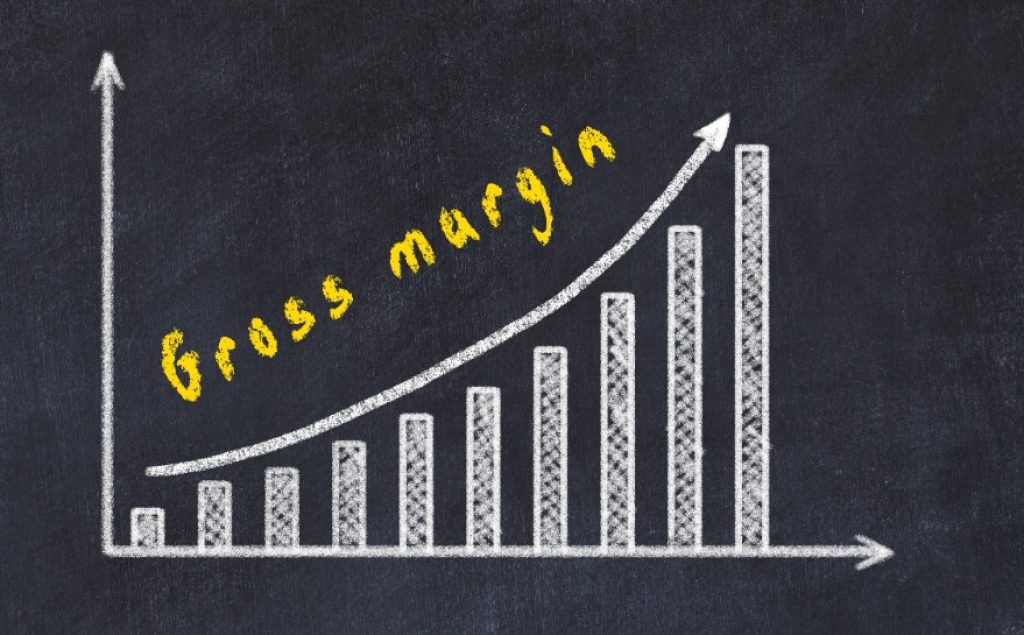Gross Margin Calculator – Profit & Income for Business
Calculator:
Expenses:
Income:
Calculate resulte for one product (before tax):
The calculation is simple and straightforward. An online calculator will do the math for you. It’s also easy to understand, as you can see what percentage of your profit margin is compared to your costs. Our simple gross profit margin calculator allows you to perform calculations effortlessly.
It allows you to compare profits across multiple years, products and services. This will enable you to see if one product or service line has higher margins than another, which can help you decide where to devote more resources in the future.
You can use the calculation when negotiating contracts with vendors or suppliers, such as those selling raw materials or components used in creating products or services your business sells.
For the online calculator to work, you need the following inputs:
Expenses:
- Cost of one product
- Additional expenses for one product
- Marketing cost for one product
- Shipping cost for one product
Income:
- Selling price for one product
The online calculator will produce a result – Gross Margin Percentage
Gross Margin versus Gross Profit
What is gross margin & how is it used? – Understanding gross margin has substantial value in multiple ways. A thorough understanding of how the term is used in business and accounting allows you to make decisions on expenses and future strategies.
Gross margin is the profit left over after paying all the operating costs incurred to run a business. Operating expenses include inventory, labor, and everything else it takes to run your company’s daily operations.
The gross margin does not consider the cost of capital, including the cost of starting your business, financing activities, or debt repayment. Our online calculator has been developed with the help of professionals.

What is a Gross Profit Margin (AKA Gross Margin)?
Calculating your company’s gross margin is a great way to measure the profitability of your business. To calculate your gross margin, you’ll need to start with your gross profit. This number is calculated by subtracting all expenses from revenues, including costs of sales, operating expenses, and administrative fees.
Once you have your gross profit, divide it by your sales or payment for your primary line of business. The result of this calculation will be your gross margin, typically presented as a percentage. Knowing your gross margin can help you make informed decisions about managing and growing your business.
Cost of Goods Sold / Revenue = Gross Profit Margin
Calculating Gross Profit
To calculate gross profit, first find net income on your income statement, then subtract any expenses that aren’t related to making and selling your products or services (such as administrative expenses). This will give you “operating income,” which is how much money you make from doing business activities.
Then, take out all other expenses related to running your business (like utilities) and taxes. This should leave you with a figure showing how much your company made during a specific period. That number is your gross profit margin percentage.
Sales – Cost of Goods Sold = Gross Profit Margin
What is the Difference Between Gross Profit Margin and Gross Profit?
The difference between gross profit margin and gross profit is that a business must subtract the costs of goods sold from its total revenue to determine its gross profit – but only part of that amount can be considered net income because some business costs are not directly related to the production of goods or services being sold to customers.
What is Revenue?
Revenue refers to money that comes into your business during a specific time period (monthly, quarterly, or annually). It’s important to note that revenue doesn’t include taxes and other fees that may have been collected from customers, like sales tax or shipping charges. In this example, we’ll use annual revenue because it makes it easier to compare against other numbers in your business plan.
Revenue – Cost of Goods Sold = Gross Profit Margin
What are the Costs of Goods Sold?
To calculate your cost of goods sold, you begin by adding together all of your expenses related to producing and selling your product or service. This includes labor costs, material costs, overhead fees, and other operating costs.
Once you have added up all these expenses, subtract them from the money you brought in through sales during the period in question (typically one month).
This gives you a number called the cost of goods sold that represents all your expenses related to producing a product or providing a service within one period.
Cost of Goods Sold = Total Expenses / Units Produced
How to Calculate Average Gross Margin?
The average gross margin is the average of all gross margins for each period. Gross margin can be calculated by subtracting the Cost of Goods Sold from Revenue and dividing the result by Revenue.
Why Should Businesses Use an Online Gross Margin Calculator?
Gross margin is the difference between revenue and cost of goods sold (COGS). It is calculated by dividing gross profit by revenue. It measures performance, showing how efficiently a business uses its resources to generate sales and profits.
The gross profit margin is often used as a benchmark for evaluating the profitability of a company or product line.
Summary
Based on the company’s sales and costs of goods, gross profit and gross margin provide excellent indicators of a company’s profitability. The ratios don’t account for operating expenses, interest, and taxes, so they aren’t a comprehensive measure of profitability.
Investors and analysts often use multiple financial ratios to assess a company’s performance. To get an idea of trends, it’s best to compare ratios with companies in the same industry.
Gross profit and gross margin can provide an accurate view of the company’s use of its resources. They can be used to:
- Plan how your company will invest its revenue
- Find out how efficient your business operations are
- Identify the market areas that need innovation and growth
- Demonstrate that the company’s sales are sufficient to cover its operating costs
- Comparing the current performance to the company’s historical figures can help predict future performance
- Assess the company’s earnings per share and decide which shares are worth buying.
There are more tools for small businesses that can help you grow, take a look and use them.

